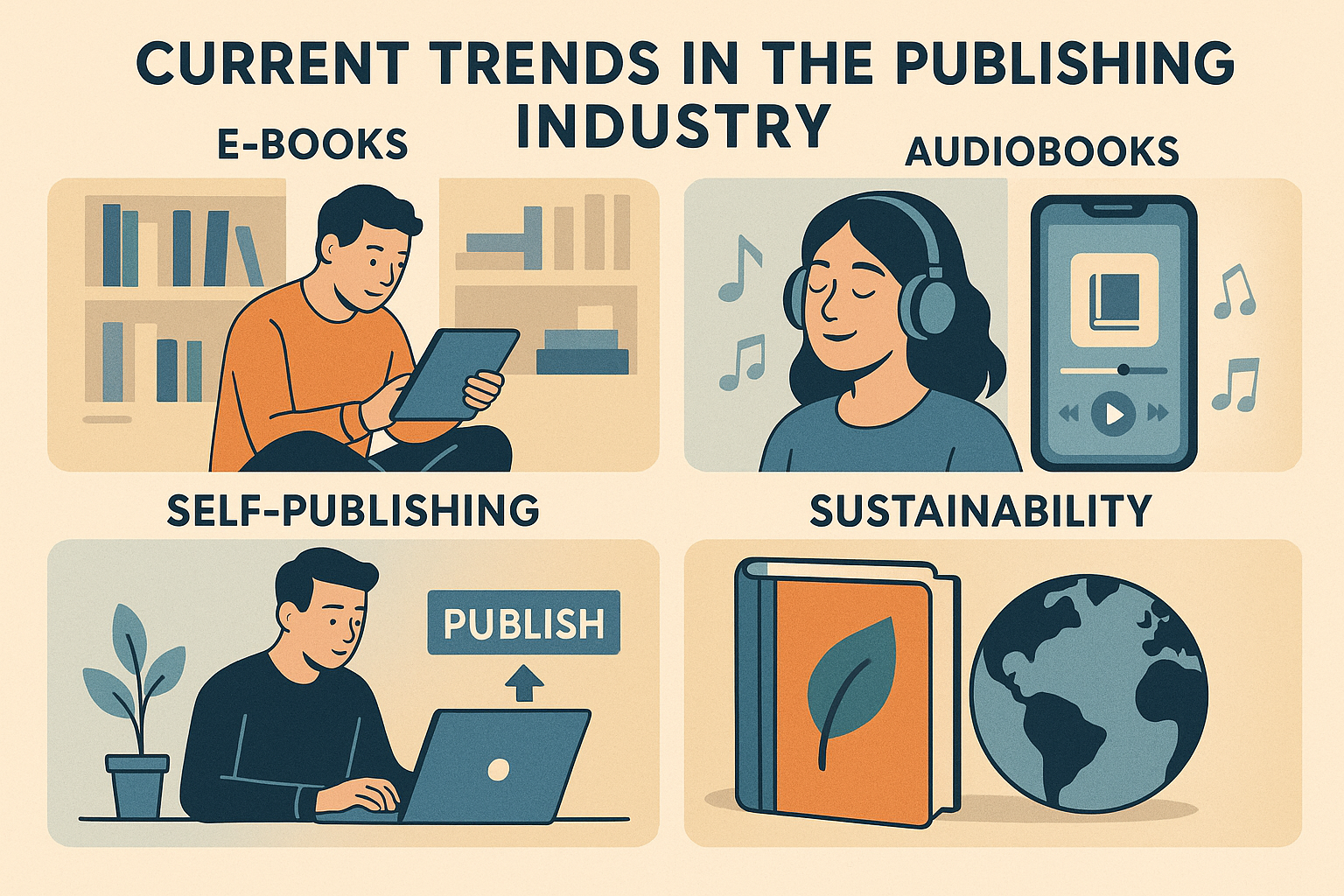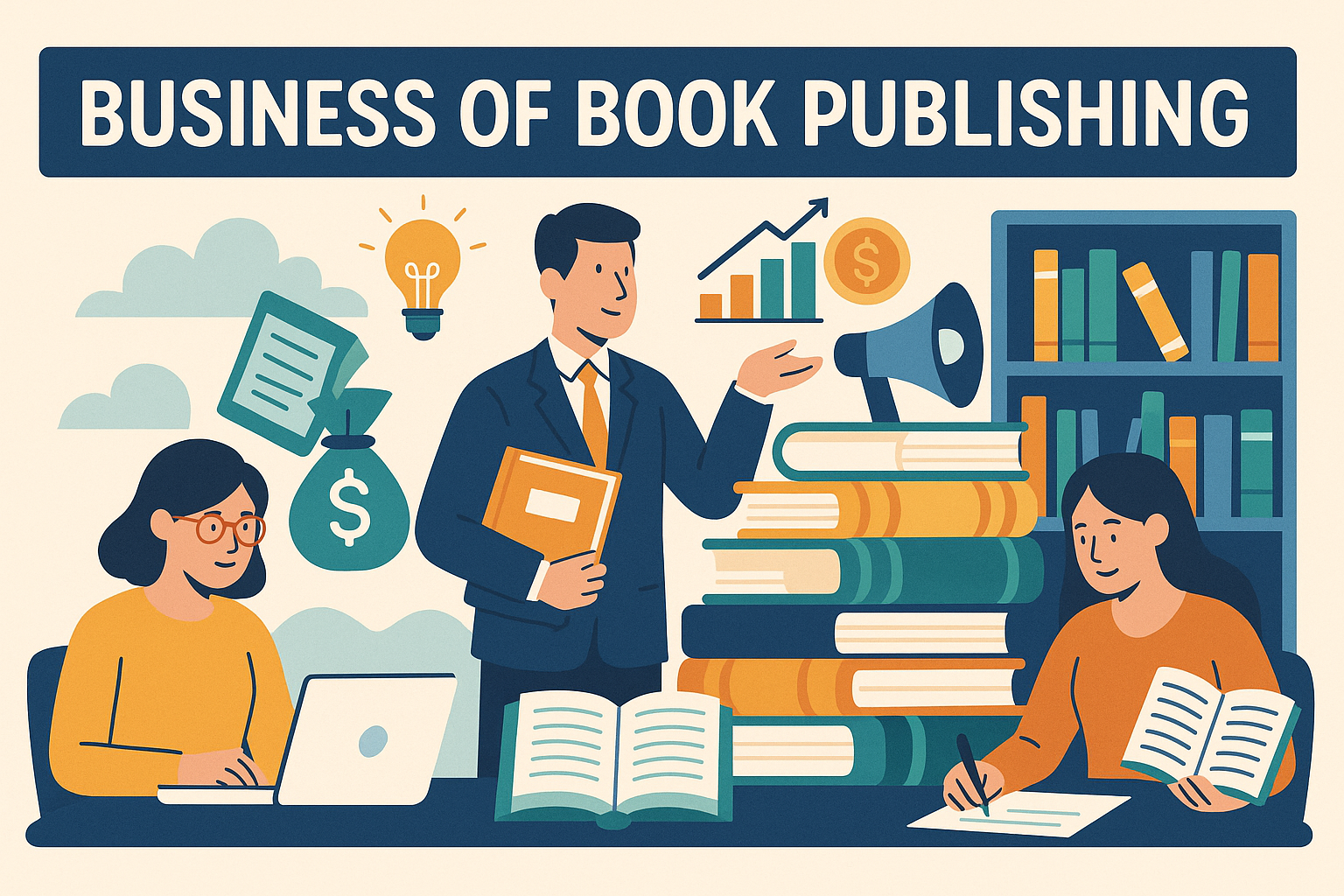
Current Trends in the Publishing Industry: A Comprehensive Analysis
The publishing landscape has undergone a remarkable transformation in recent years, driven by technological innovation, shifting consumer behaviors, and global market forces. For authors, publishers, and industry professionals, staying informed about these evolving trends is essential for making strategic decisions in an increasingly competitive market. This comprehensive analysis explores the most significant developments reshaping how books are created, distributed, marketed, and consumed in today’s dynamic publishing ecosystem.
The Rise of Digital-First Publishing Strategies
The traditional publishing model, where print books were the primary focus and digital editions were secondary considerations, has largely been inverted in recent years. Today’s forward-thinking publishers are increasingly adopting digital-first approaches that prioritize flexibility, speed to market, and diverse revenue streams.
The Evolution of E-book Technologies and Platforms
E-books have evolved far beyond simple digital replicas of print titles. Enhanced e-books now incorporate interactive elements, multimedia content, and innovative features that create immersive reading experiences. Major platforms like Amazon’s Kindle, Apple Books, and Kobo continue refining their technologies to improve readability, accessibility, and user engagement.
The underlying technology supporting e-books has also matured. The EPUB 3 standard now allows for more sophisticated formatting, better accessibility features, and improved support for complex layouts and illustrations. Publishers leveraging these capabilities can create digital reading experiences that rival or exceed print in certain contexts.
Subscription services like Kindle Unlimited, Scribd, and Storytel have gained substantial market share, introducing Netflix-style all-you-can-read models that change how readers discover and consume content. These platforms have proven particularly effective for genre fiction, leading many book publishing services to develop specialized strategies for these channels. The subscription model generates valuable data about reading habits that publishers can use to inform future acquisition and marketing decisions.
Mobile Reading and Micro-Content
Smartphones have become a primary reading device for millions of consumers worldwide. This shift has driven innovation in content formatting and delivery, with publishers creating mobile-optimized reading experiences. Short-form content, serialized publishing, and content specifically designed for small screens continue gaining popularity.
Apps like Wattpad, Radish, and Kindle Vella have pioneered serialized digital publishing models where readers consume stories in bite-sized installments, often paying as they go. This approach has proven particularly effective for engaging younger readers who are accustomed to consuming content in short sessions on mobile devices.
The rise of mobile reading has also influenced content creation, with some book publishing services now specializing in developing and optimizing content specifically for mobile consumption. These services help authors format work for optimal mobile reading experiences and develop serialization strategies that maximize reader engagement and revenue.
Direct-to-Digital Publishing
Many publishers are experimenting with digital-only imprints or titles that bypass print entirely. This approach reduces production costs and allows for more experimental content that might not justify the expense of a traditional print run. Digital-first or digital-only strategies enable publishers to test market reception before committing to print production.
The direct-to-digital model has proven particularly valuable for testing new authors, reviving backlist titles, or publishing works with niche appeal. Publishers can gather data on performance and reader engagement before making larger investments in marketing or print production. This approach has been especially beneficial for genre fiction like romance, science fiction, and mystery, where digital readership is particularly strong.
The Renaissance of Audiobooks
Perhaps no segment of publishing has experienced more dramatic growth than audiobooks. Once a niche format primarily serving the visually impaired and commuters, audiobooks have exploded into the mainstream, growing at double-digit rates annually for the past several years.
Technological Advancements in Audio Production
Improvements in recording technology, digital distribution, and mobile listening apps have transformed audiobook production and consumption. Modern audiobooks feature sophisticated production values, including professional narration, sound effects, and musical elements that enhance the storytelling experience.
Text-to-speech technology has improved dramatically, with AI-generated voices becoming increasingly natural and expressive. While premium audiobooks still rely on human narrators, these technological advances have made audiobook production more accessible and affordable for independent authors and small publishers. Some specialized book publishing services now offer high-quality audiobook production at price points that make the format viable even for authors with modest budgets.
Cloud-based recording and production tools allow narrators to work remotely while maintaining studio-quality output. This distributed production model became essential during the COVID-19 pandemic but has persisted as an efficient approach that expands the pool of available voice talent regardless of geographic location.
Multicast Performances and Enhanced Audio Experiences
Leading publishers are pushing the boundaries of the audiobook format with multicast performances featuring full casts of voice actors, original music scores, and sophisticated sound design. These productions blur the line between traditional audiobooks and audio dramas, creating immersive listening experiences that attract new audiences to the medium.
Services like Audible Originals and Spotify have commissioned original audio content designed specifically for the format rather than adapted from print. These audio-first productions take full advantage of the medium’s strengths and have helped establish audiobooks as a distinct art form rather than merely an alternative way to consume print books.
The enhanced production values of modern audiobooks have attracted Hollywood talent, with major actors now regularly narrating high-profile titles. This celebrity involvement has further legitimized the format and attracted listeners who might not otherwise consume books.
Integration with Voice Assistant Technologies
The proliferation of smart speakers and voice assistants has created new opportunities for audiobook consumption. Listeners can now access their audiobook libraries through devices like Amazon Echo, Google Home, and Apple HomePod, making the listening experience more seamless and accessible throughout the home.
Voice-first interfaces are changing how consumers discover and purchase audiobooks. Publishers and book publishing services are optimizing metadata and descriptions to facilitate voice-based search and recommendations. This trend is likely to accelerate as voice assistant technology continues to improve and gain market penetration.
Print’s Resilient Adaptation
Despite predictions of its demise, print publishing has demonstrated remarkable resilience by adapting to changing market conditions and consumer preferences. Physical books remain a significant portion of the market, with print sales showing stability and even growth in certain segments.
The Evolving Role of Print Books
Print books have increasingly become premium physical objects, with publishers investing in design elements that digital cannot replicate. Special editions, enhanced cover treatments, illustrated editions, and high-quality materials serve the collector’s market and emphasize the tangible pleasures of physical books.
Independent bookstores have experienced a resurgence, with their numbers growing steadily over the past decade. These retailers differentiate themselves through curated selections, community engagement, and personalized service that online retailers cannot match. This revival has reinforced the importance of quality physical books in the market.
Print-on-demand technology has revolutionized the economics of physical book production. By eliminating the need for large print runs and warehouse storage, these technologies make printing books economically viable even for niche titles with limited audiences. Book printing companies have embraced these technologies, offering increasingly sophisticated options for short-run and on-demand printing that maintain high production values.
Special Formats and Collector’s Editions
Publishers are capitalizing on readers’ emotional connection to physical books by creating special formats and limited editions. These premium products often include features like signed pages, special bindings, exclusive content, or collectible packaging that command higher price points and create additional revenue streams from existing intellectual property.
The collectible book market has grown substantially, with fine press editions, limited runs, and deluxe packages appealing to dedicated readers and collectors. Publishers like Folio Society, Subterranean Press, and Suntup Editions have built successful businesses focused entirely on high-end book production, demonstrating the continued value of physical books as objects of desire.
Book design has received renewed attention as publishers seek to distinguish print offerings from digital alternatives. Innovative cover designs, thoughtful typography, and attention to physical details like paper quality and binding techniques enhance the tactile experience of reading physical books and justify their premium pricing in a digital age.
The Globalization of Publishing
Publishing has become increasingly global, with technological advances eliminating many traditional barriers to international distribution. This globalization presents both opportunities and challenges for publishers and authors.
Expanding Access to International Markets
Digital distribution has dramatically reduced the obstacles to reaching international readers. E-books and audiobooks can be made available globally with minimal additional cost, allowing publishers to access markets that would be impractical to serve with physical books alone.
Translation technologies have improved significantly, making it more feasible to localize content for different markets. While human translation remains essential for high-quality literary work, machine translation can now provide acceptable quality for certain types of content, expanding the potential for global distribution.
International book publishing services have emerged to help authors and publishers navigate foreign markets. These specialized services handle translations, cultural adaptations, local marketing, and distribution arrangements that make global publishing accessible even to independent authors and small presses.
Cross-Cultural Content and Diverse Voices
Readers worldwide are showing increasing interest in stories from diverse cultural perspectives. Works in translation are finding broader audiences, and publishers are actively seeking voices that can provide authentic insights into different cultural experiences.
Publishers like AmazonCrossing, Europa Editions, and New Directions have built successful businesses focusing on works in translation, bringing international authors to English-speaking markets. Simultaneously, English-language works are being translated into more languages than ever before, creating truly global readerships for compelling content.
The most forward-thinking book publishing services now offer comprehensive internationalization assistance, helping authors adapt their work for global audiences while respecting cultural nuances and sensitivities. These services go beyond simple translation to ensure that content resonates authentically in each target market.
Global Rights Management and Licensing
Rights management has grown more complex in the global marketplace. Publishers must navigate varying copyright laws, licensing requirements, and cultural expectations across different territories. Specialized expertise in international rights has become increasingly valuable as publishers seek to maximize the value of their intellectual property worldwide.
Blockchain technology is beginning to transform rights management, creating transparent and immutable records of ownership and usage rights. This technology has the potential to streamline international licensing agreements and ensure appropriate compensation for creators across global markets.
Digital rights management continues to evolve, with publishers seeking the right balance between protecting intellectual property and providing a frictionless experience for legitimate users. Overly restrictive DRM can limit the market potential of digital content, while insufficient protection risks unauthorized distribution.
Data-Driven Publishing
The publishing industry has embraced data analytics to inform decision-making throughout the publication process. From acquisition to marketing to format decisions, data now plays a crucial role in publishing strategy.
Reader Analytics and Behavioral Insights
E-book platforms and reading apps collect detailed information about reading behavior, including completion rates, reading speed, highlighted passages, and abandonment points. Publishers can use this data to understand what engages readers and what causes them to lose interest.
Heat maps showing which parts of books receive the most attention and which are frequently skipped provide valuable insights for authors and editors. This information can inform future writing and editing decisions, helping create more engaging content aligned with reader preferences.
Some book publishing services now offer analytics packages that provide authors with detailed information about reader engagement with their work. These insights can inform revisions of existing titles and strategic decisions for future projects, helping authors create content with greater market appeal.
Evolving Compensation Models for Authors
Royalty structures continue to evolve, with some publishers offering higher percentages but fewer services, while others maintain traditional rates with comprehensive support. Authors must carefully evaluate these tradeoffs when considering publishing options.
Income diversification has become essential for most authors, with book sales representing just one revenue stream alongside speaking engagements, teaching, consulting, crowdfunding, and content creation for other media. Successful authors increasingly view their books as part of a broader business strategy rather than as isolated products.
The best book publishing services now offer guidance on developing multiple revenue streams and building sustainable author businesses. These comprehensive services help authors think strategically about their careers rather than focusing narrowly on book production and sales.
Conclusion: Navigating the Future of Publishing
The publishing industry continues to evolve at an accelerating pace, creating both challenges and opportunities for everyone involved in creating and distributing books. Success in this dynamic environment requires adaptability, strategic thinking, and a willingness to embrace new approaches while honoring the timeless value of great writing.
For authors, the proliferation of publishing options offers unprecedented control over how their work reaches readers. Whether working with traditional publishers, utilizing book publishing services, or managing the entire process independently, authors now have more pathways to publication than ever before. The key to success lies in making informed choices aligned with specific goals and strengths.
For publishers, embracing technological innovation while maintaining focus on discovering and developing great content remains the central challenge. The most successful publishers combine data-driven decision-making with the human expertise and passion that has always been the industry’s foundation.
For readers, these industry trends promise greater diversity of content, more formats tailored to specific preferences, and new ways to discover and experience books. The fundamental pleasure of engaging with well-crafted writing remains constant even as the containers and channels for that writing continue to evolve.
As we look to the future, one thing remains certain: storytelling and the sharing of knowledge through books will remain essential to human culture, even as the definition of what constitutes a “book” continues to expand and evolve. By staying informed about industry trends and making strategic choices, everyone involved in the creation and distribution of books can contribute to a vibrant and sustainable publishing ecosystem that serves writers and readers alike.
Whether you’re an author looking to get your book published, a publisher navigating changing market dynamics, or a service provider supporting the publishing process, understanding these industry trends is essential for making informed decisions in this rapidly evolving landscape.



